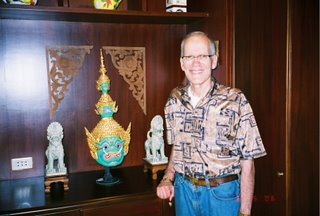Another Russian Piano Talent Impresses Asia
 Young Russian pianist Ilya Rashkovskiy
Young Russian pianist Ilya RashkovskiySingapore October 21, 2009. With so much classical piano programming being so similar nowadays, especially in this part of the world, it's exciting when a pianist ventures out into some less well-known territory. This takes courage and it also demands close listening from the audience. Both elements were in evidence at Ilya Rashkovskiy's splendid October 21 recital at the National University of Singapore.
Rashkovskiy, a serious 25-year old Russian, who has won several competitions, including, in 2005, the First Hong Kong International Piano Competition with Vladimir Ashkenazy chairing the jury, devoted the entire first half of the evening to the very Spanish music of Enrique Granados, Joaquin Rodrigo and Federico Mompou. While it is too facile to state that you have to be a Spaniard to play this repertoire (Rubinstein and Daniel Barenboim have made it their own), it probably helps to be raised in this milieu.
Rashkovskiy immediately showed himself to be highly musical, but he has yet to come up with a convincing "Spanish sound." He's still feeling his way out of some jagged edges and interpretive problems, but with so abundant a talent, his continued investigation of the Spanish repertory is bound to pay musical dividends. Overall, his Granados, Rodrigo and Mompou were enjoyable, pleasing, and very listenable.
It was during the second half of the evening that Rashkovskiy established his authority with the nine Etudes-Tableaux of Sergei Rachmaninov's Opus 39. From the first bar of No. 1, it was clear that this was music that Rashkovskiy owns. Although I've heard all of these Etudes-Tableaux in recital, and have them all in bits and pieces on various CDs, this is the first time that I've heard them performed together, and, in the hands of a substantial talent like Rashkovskiy, I gained a new appreciation for the overall concept that Rachmaninov must have had in mind. It is to Rashkovskiy's credit that each Etude-Tableau exhibited its own special character, while relating to what proceeded and what followed it. This takes real musicianship, which Rashkovskiy has in abundance.
The audience was demonstrably appreciative of Rashkovskiy's fine performance and was rewarded by two impressively performed encores, a Chopin and a Scriabin etude. If it were up to the audience, we would have happily stayed all night.
Post Script. The auditorium at NUS did not have a Steinway concert grand, but it needs it badly if pianists like Rashkovskiy are to sound their best. The slightly smaller Steinway used by Rashkovskiy was too small for a hall of this size (about 300 seats) and the sound suffered accordingly.



0 Comments:
Post a Comment
<< Home